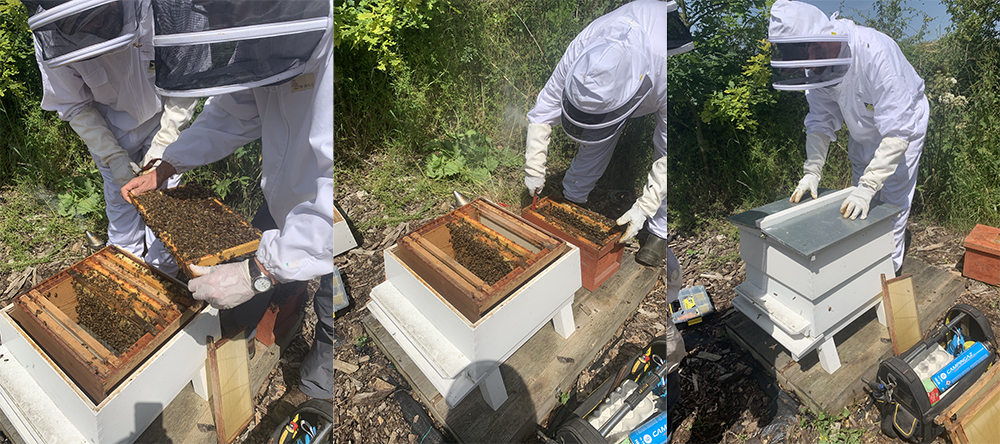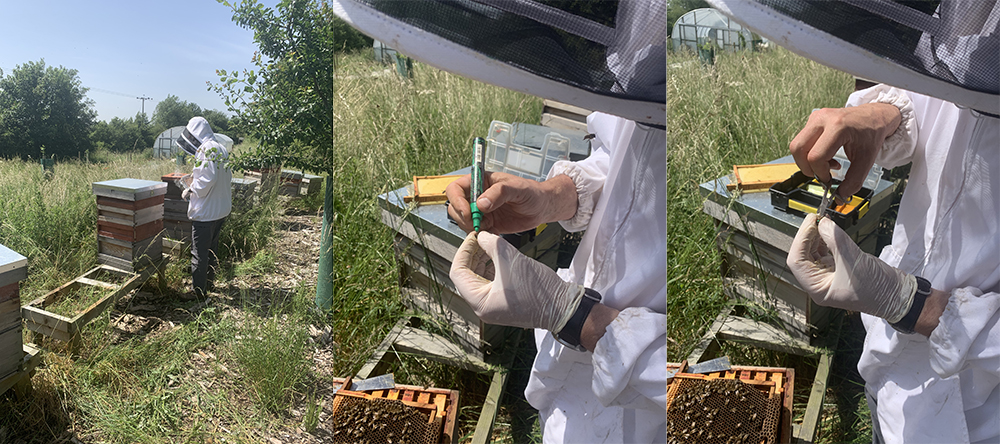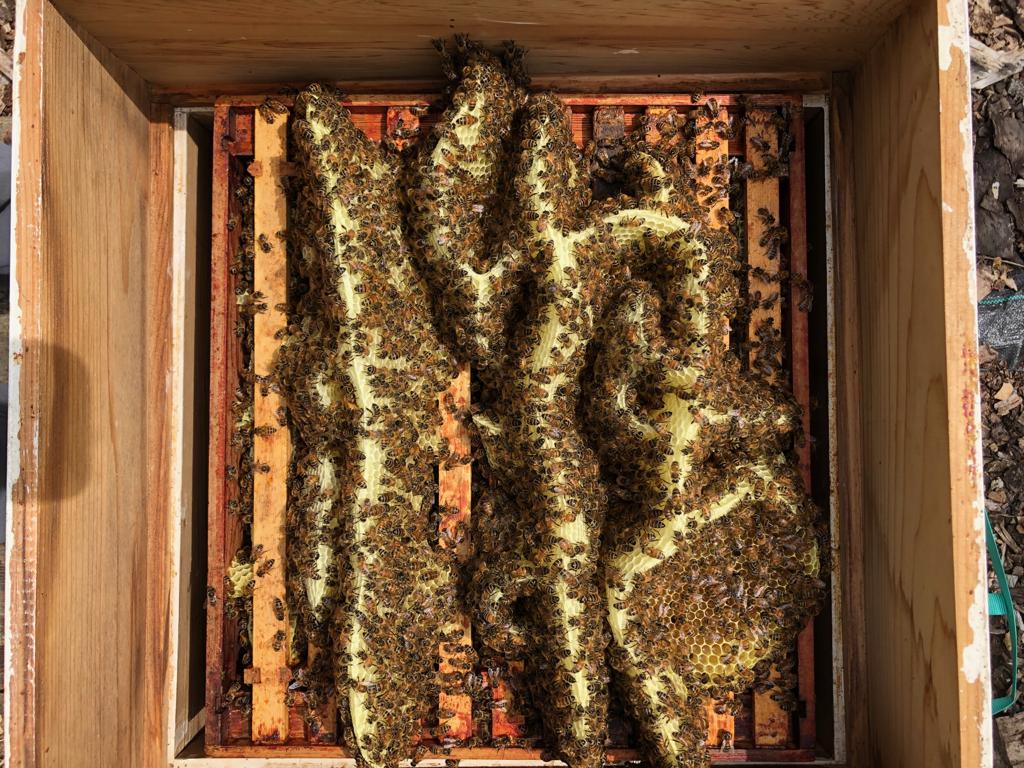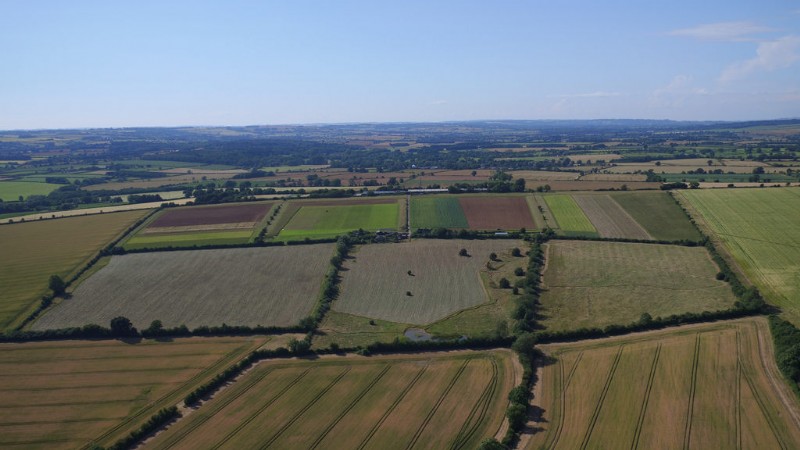When we carried out our late June inspection of the apiary, my WBC, which contained a split colony from one of Chris’s hives which was trying to swarm last time, all looked good with lots of bees present.

There was a lovely brood pattern and colour - note the very yellow comb, showing they have been foraging from sainfoin which recently came into flower.

We transferred the nuc frames to a new brood box, checking for the queen. We were unable to spot her on this occasion, but were happy that she must be there, due to all the eggs, larvae and brood present. When we first installed the nuc from the split, the queen had not yet mated, and with the previous wet weather we had feared she may struggle, so it was great to discover that she had been successful!

We next moved on to our national. The sad news is that this colony has been lost. When we last visited we feared it had swarmed, since there were very few bees compared to the last inspection, and quite a lot of water was present, which we estimated to be condensation, which the depleted number of bees had been unable to remove. This time the hive was completely empty. We believe that a few weeks of cold, wet weather following a tricky spring, coupled with the swarm, are the reasons for the loss.
It's especially upsetting because this colony was adopted from a friend of the farm, Jo Leigh, a local FWAG advisor, so it's very sad to see them go. Having said this, having been a 'wild' colony they had become quite aggressive and were quite tricky to manage. Many of us have been stung by this colony over the past few years, so now we have an opportunity to replace them with some more well-tempered bees. Chris has been bringing on two colonies which we will install in our two spare hives on the next visit.
Chris' hives were looking great though. A few had 3 supers on them already, and all of his colonies were doing well generally. In one of the hives Chris needed to find, clip and mark the queen with this years green dot which you can see here:

Curiously, on opening one of Chris' hives we spotted lots of dead drones (all other bees healthy) on-top of the queen excluder. This was very strange, because in theory drones should be kept inside the brood box by the queen excluder. On closer inspection we found brood in the supers above, so somehow the queen had managed to get through the excluder up into the supers, lay eggs which the colony brought on as drones, which then died as they could not get back down into the brood box. Sneaky queen! Chris plans to now use this as an experiment and allow the brood to extend into the supers so there will be an extra large brood space. With so much brood, Chris can use this hive to split into nucs for developing colonies over the wither months, ready for next year.

We followed up with a short visit to the apiary a couple of weeks later, on the 17th July.
The WBC, developing from the split hive, continued to come on well. In fact, with all the sainfoin on the farm in flower the colony had developed so well that it had expanded up and out of the brood box with the typical bright yellow sainfoin comb

We've removed the comb, replaced it with a queen excluder and super, and placed the comb above this for the bees to empty and fill the new super with.
Hopefully with the flowering sainfoin as well as many other crops in flower on the farm, they should be drawing comb on the new super very soon.

We'll be introducing two new colonies to the two remaining hives over the next few weeks.










